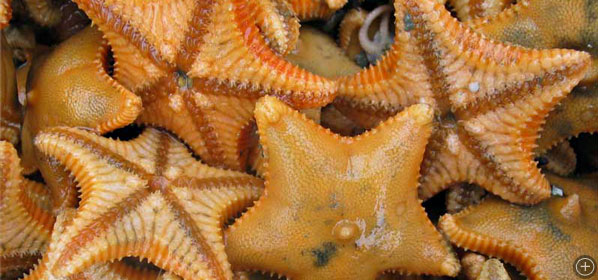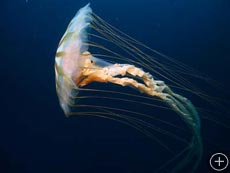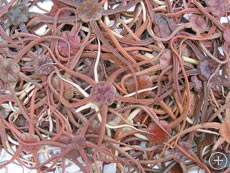Census of Marine Life
The next time you’re gazing into a well-stocked aquarium, try counting all the different creatures you see there. Easy? Maybe. Now imagine repeating this activity, except this time, the “aquarium” is the world’s oceans. Oh, and you need to count not only all the plants and animals that you can see, but also the thousands of microscopic ones that you can’t.
This daunting feat—counting all the critters in the sea—is the goal of a project called The Census of Marine Life. Using everything from old-fashioned nets to underwater robots, this global network of researchers engaged in a ten-year (2000-2010) mission to assess and explain the diversity, distribution, and abundance of marine life in the oceans.
The census effort has turned up some surprising finds at the poles. In the Artic, scientists found an unexpectedly high density of life living under the thick layers of sea ice, including new species of jellys and bristle worms. In the Antarctic, census researchers have stunned the world with images of undersea giants never seen before, including sea spiders the size of dinner plates and three-foot tunicates resembling oversized glass tulips.
Strictly speaking, the census can’t count each and every crab, coral, and cod. Instead, researchers make detailed surveys of all the existing habitats, then extrapolating to make estimates of the size and location of each species’ population. This information establishes a baseline that will allow future researchers to track changes in the marine population—for example, changes due to global warming.
As a result of the census project, new species have been discovered faster than they can be named. In fact, over 75 percent of the species identified so far are new to science—that is, never before described. Most of these are smaller creatures, such as worms and mollusks. Researchers are also working to identify “aliases,” multiple names for the same creature. The breadcrumb sponge is the alias champion so far; over the years, this nubbly sponge has been given 56 different names since it was first described in 1766.
The census project has yielded not only new species, but other surprises as well. On an underwater mountain ridge south of New Zealand, for example, researchers came across an astonishing aggregation of brittlestars, skinny relatives of the sea star. At “Brittlestar City,” tens of millions of spindly-legged brittlestars live crammed together in a unique zone where ferocious currents bring a continual supply of food but sweep away would-be predators.












